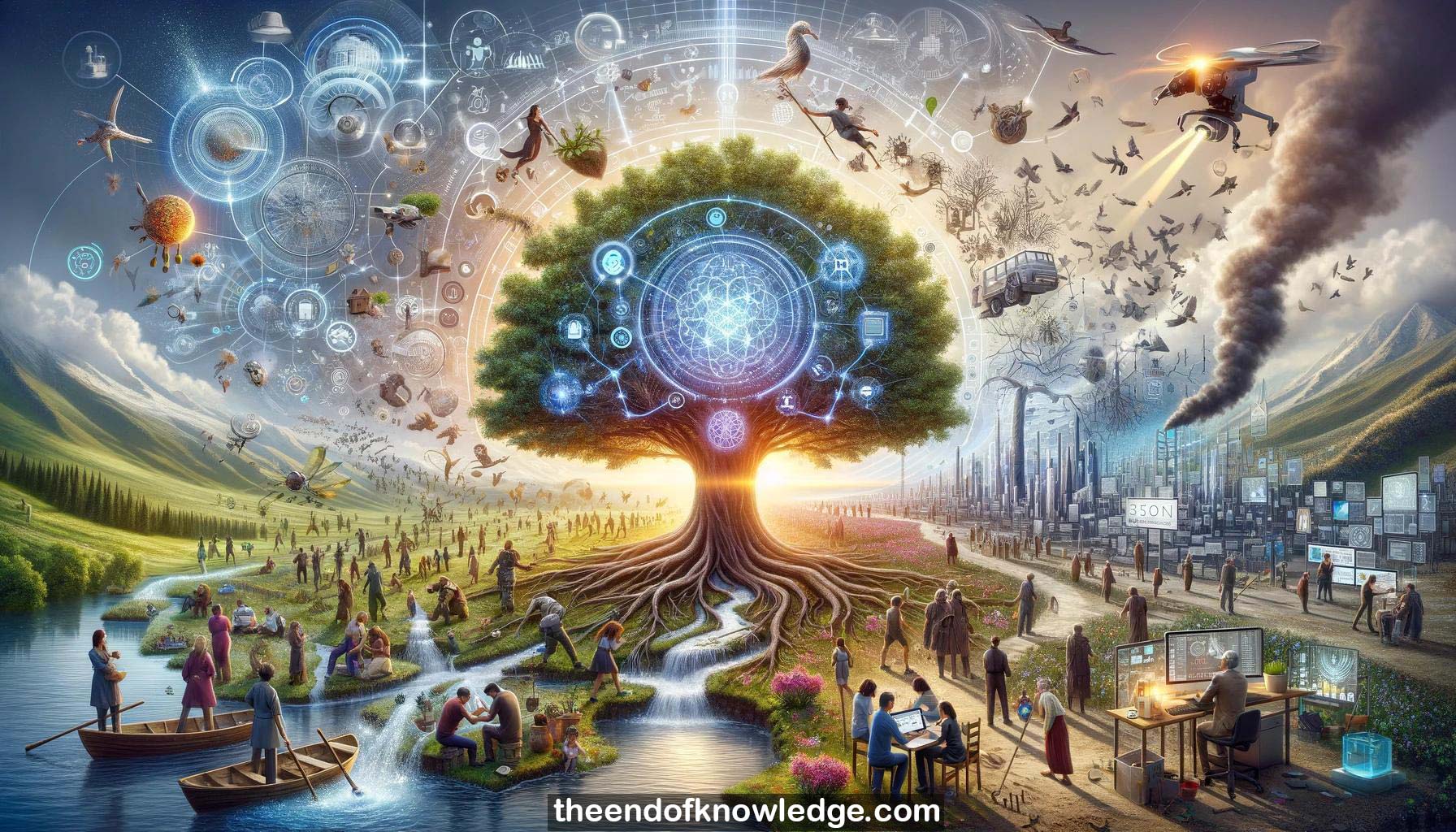 >
>
Concept Graph & Resume using Claude 3 Opus | Chat GPT4 | Gemini Adv | Llama 3:
Resume:
1.-Dr. Martin Luther King warned about overinvesting in technology and underinvesting in social and moral development. We need to develop technology humanely and justly.
2.-We tend to see technology in binary terms - it will save or destroy us. We need to recognize human agency in shaping technology.
3.-Power dynamics, not just ethics, shape machine learning. Racism is productive, generating things of value to some while harming others.
4.-Race and technology mutually shape each other. Social norms and values precede and influence what technologies are deemed desirable and inevitable.
5.-Imagination is a contested battleground that influences technology and social order. Many live inside the nightmares enabling elite fantasies.
6.-Apps like Citizen broadcast crime alerts, shaping perceptions of public safety while ignoring issues like reckless driving. Social anxieties shape technologies adopted.
7.-Fintech lenders in Kenya entice and exploit borrowers, harvesting digital data to infer character. Algorithms scoring individuals significantly shape economic prospects.
8.-The film Sleep Dealer illustrates the duplicity of techno-utopian fantasies - easy access to some is a nightmare for others.
9.-News stories about "racist robots" have evolved from shock to unsurprise to attempts to override biases. Differentiating technologies that differentiate us is challenging.
10.-A study found a "race-neutral" healthcare algorithm reproducing racial disparities by using costs to predict needs. Indifference to social reality is harmful.
11.-The New Jim Code concept examines how racism gets encoded in technology under the guise of progress. Related concepts include coded bias, algorithms of oppression.
12.-Four conceptual frames: engineered inequity (explicitly seeks to amplify divisions), default discrimination (ignores cleavages, reproducing defaults), coded exposure (surveillance vs inclusion), techno-benevolence (addresses bias narrowly).
13.-Recidivism risk assessment surveys encode structural racism without mentioning race. Colorblind inputs still produce biased outputs.
14.-Surveillance technologies render racialized groups either invisible or hypervisible in ways that enable vulnerability. Creative resistance emerges.
15.-The show Better Off Ted satirizes how a superficial corporate diversity ethos and whiteness of tech development ensures innovation produces containment.
16.-AI hiring tools aim to reduce bias but can mirror discriminatory patterns against black and female applicants. Technical fixes appear desirable but perpetuate harms.
17.-Job seekers feel dehumanized by AI interviews with no transparency. Some develop subversive tactics like using invisible keywords to game automated screenings.
18.-Labor organizing among tech workers has challenged corporate collaboration with harmful state practices, connecting to a longer activist history.
19.-Educational initiatives develop racial literacy in tech, examining how structural racism operates in technologies and building capacity for intervention.
20.-Community organizations like Data for Black Lives and Detroit Community Tech Project advance proactive approaches to tech justice through policy and grassroots education.
21.-In St. Paul, a coalition successfully organized against a predictive policing program targeting youth, dissolving it for a community-led approach.
22.-The arts and humanities are vital for critically examining technologies. Imagining alternative realities helps see current injustices.
23.-A parody "White Collar Crime Early Warning System" subverts predictive policing by flagging likely sites of financial crimes by corporate executives.
24.-Creative projects upset the status quo to expose discrimination embedded in technologies by reversing common targets.
25.-If inequity is woven throughout society, each twist and code of technology is a chance to weave new patterns and politics.
26.-Accepting the vastness of injustice motivates becoming "pattern makers" who actively create new possibilities through technology.
27.-An ahistorical approach to machine learning can capture and harm; a historically and sociologically grounded approach can encode justice and empowerment.
28.-Critical intellectual traditions continually develop insights and strategies for justice that can be built upon in the context of new technologies.
29.-The speaker calls for supporting tech justice initiatives and finding ways to build on the tradition of embedding equity in innovation.
30.-Developing technology justly requires wrestling with power dynamics, social and historical context, and the contested terrain of imagination.
Knowledge Vault built byDavid Vivancos 2024